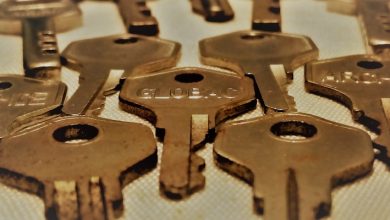The Role of Decentralized Identifiers (DIDs) in Enhancing Security

- Introduction to Decentralized Identifiers (DIDs)
- The Benefits of Using DIDs for Security
- Implementing DIDs in Authentication Processes
- Enhancing Data Privacy with Decentralized Identifiers
- The Role of DIDs in Securing IoT Devices
- Challenges and Future Outlook of DIDs in Security
Introduction to Decentralized Identifiers (DIDs)
Decentralized Identifiers, or DIDs, are a new type of identifier that enables verifiable, self-sovereign digital identity. DIDs are a fundamental building block of decentralized identity ecosystems, providing a way for individuals, organizations, and things to have a unique, globally resolvable identity that does not depend on any central authority.
DIDs are designed to be used in a variety of contexts, from social networking to financial services to healthcare. By using DIDs, users can have more control over their personal information and how it is shared and accessed. This increased control can help prevent identity theft, fraud, and other security risks associated with centralized identity systems.
One of the key benefits of DIDs is that they are cryptographically secure, meaning that they can be used to prove ownership of a digital identity without relying on a trusted third party. This makes DIDs particularly well-suited for use in situations where trust is limited or where data privacy is a concern.
Overall, DIDs have the potential to revolutionize the way we think about identity on the internet, providing a more secure, private, and user-centric approach to managing digital identities. By leveraging DIDs, organizations can enhance security, reduce fraud, and improve user trust in their online services.
The Benefits of Using DIDs for Security
Using Decentralized Identifiers (DIDs) can greatly enhance security in various online applications and systems. One of the key benefits of utilizing DIDs for security is the elimination of centralized points of failure. By decentralizing identities, the risk of a single point of compromise is significantly reduced. This means that even if one identifier is compromised, the entire system remains secure.
Another advantage of leveraging DIDs for security is the increased privacy they offer. DIDs allow individuals to have more control over their personal information and who has access to it. This helps prevent unauthorized access to sensitive data and reduces the likelihood of identity theft or fraud.
Furthermore, using DIDs can improve the overall user experience by simplifying the authentication process. With DIDs, users can securely verify their identities without having to rely on third parties or centralized identity providers. This streamlines the authentication process and enhances security by reducing the number of potential attack vectors.
Implementing DIDs in Authentication Processes
Implementing Decentralized Identifiers (DIDs) in authentication processes can significantly enhance security measures for individuals and organizations. By utilizing DIDs, users can have more control over their digital identities and reduce the risk of data breaches and identity theft.
One way to integrate DIDs into authentication processes is through the use of blockchain technology. By storing digital identities on a decentralized and tamper-proof ledger, it becomes much harder for malicious actors to manipulate or steal sensitive information. This added layer of security can help prevent unauthorized access to personal accounts and protect sensitive data from falling into the wrong hands.
In addition to blockchain, implementing DIDs can also streamline the authentication process for users. With a unique identifier that is not tied to any central authority, individuals can easily prove their identity across different platforms and services without having to repeatedly verify their information. This not only saves time but also reduces the likelihood of human error in the authentication process.
Furthermore, the use of DIDs can help foster greater trust between users and service providers. By enabling individuals to control their own digital identities, organizations can build more transparent and secure relationships with their customers. This can lead to improved user experiences and increased confidence in the security of online transactions.
Overall, integrating DIDs into authentication processes is a crucial step towards enhancing security in the digital realm. By leveraging decentralized identifiers, individuals and organizations can better protect sensitive information, streamline authentication processes, and foster trust in online interactions.
Enhancing Data Privacy with Decentralized Identifiers
Decentralized Identifiers (DIDs) play a crucial role in enhancing data privacy by providing a secure and verifiable way to uniquely identify entities online. By utilizing DIDs, individuals and organizations can have greater control over their personal information and how it is shared and accessed. DIDs are cryptographically secure, ensuring that only authorized parties can access and use the identifier.
One of the key benefits of using DIDs for data privacy is that they enable individuals to own and manage their digital identities without the need for intermediaries. This reduces the risk of data breaches and unauthorized access to sensitive information. Additionally, DIDs can be used to establish trust between parties in online transactions, as they provide a tamper-proof way to verify the authenticity of identities.
Furthermore, DIDs can be used to enhance the security of decentralized systems by enabling secure communication and interaction between different entities. This can help prevent identity theft and fraud, as well as ensure that data is only shared with authorized parties. Overall, DIDs offer a powerful solution for enhancing data privacy in an increasingly digital world.
The Role of DIDs in Securing IoT Devices
Decentralized Identifiers (DIDs) play a crucial role in enhancing the security of IoT devices. By providing a unique and tamper-proof identity to each device, DIDs help prevent unauthorized access and protect sensitive data. This ensures that only trusted entities can interact with the device, reducing the risk of cyber attacks and breaches.
Implementing DIDs in IoT devices also enables secure authentication and authorization mechanisms. Each device can cryptographically prove its identity without relying on a centralized authority, making it harder for malicious actors to impersonate legitimate devices or users. This strengthens the overall security posture of IoT ecosystems and enhances trust among stakeholders.
Furthermore, DIDs enable the establishment of secure communication channels between devices, ensuring that data exchanged between them remains confidential and integrity. This is especially important in critical applications such as healthcare, smart homes, and industrial control systems, where privacy and safety are paramount. By leveraging DIDs, organizations can mitigate the risks associated with insecure IoT deployments and build a more resilient infrastructure.
In conclusion, DIDs are a powerful tool for securing IoT devices and enhancing the overall security of connected systems. By providing a decentralized identity layer, DIDs help prevent unauthorized access, enable secure authentication, and facilitate encrypted communication. Embracing DIDs in IoT deployments is essential to safeguarding sensitive data, protecting against cyber threats, and fostering trust in the digital ecosystem.
Challenges and Future Outlook of DIDs in Security
One of the main challenges facing Decentralized Identifiers (DIDs) in security is the issue of scalability. As more organizations and individuals adopt DIDs for secure authentication and data exchange, the infrastructure supporting these identifiers must be able to handle the increased demand. This requires ongoing development and investment in technologies that can support a growing number of DIDs without compromising security.
Another challenge is the potential for DIDs to be used maliciously. While DIDs offer a high level of security and privacy, they also present new opportunities for bad actors to exploit vulnerabilities in the system. Developers and security experts must remain vigilant in identifying and addressing these threats to ensure the continued integrity of DIDs as a secure form of identification.
Looking ahead, the future of DIDs in security appears promising. As technology continues to evolve, so too will the capabilities of DIDs to provide secure and decentralized identity management. With ongoing research and development, DIDs have the potential to revolutionize the way we approach identity verification and data protection in the digital age.
In conclusion, while there are challenges to overcome, the future outlook for DIDs in security is bright. By addressing scalability issues and staying ahead of potential threats, DIDs have the potential to greatly enhance security in a variety of applications. As technology continues to advance, so too will the role of DIDs in ensuring secure and reliable identity management.



